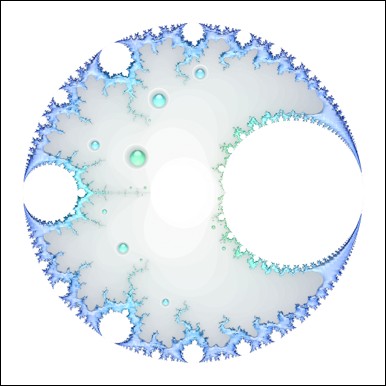Gallery
This is a gallery of images made by the Fracture screensaver. They are just a nice illustration of what Fracture is capable of, and they make nice desktops if your monitor is the right size. My monitor back when I made these was 1600x1024, so that's what the full-size versions of all these are. The versions shown in the gallery are 400x256; click on them to get a full-size version. In many cases the small version doesn't even begin to do justice to the full-size version; imagine how beautiful a 20x30 print at 200dpi would be! Maybe some day that will happen.
These images are mostly JPEGs, with compression ratios chosen individually to avoid degradation. Occasionally, substantial degradation was visible even at the highest quality setting; in those cases, PNG has been used.
The images are divided into 8 categories of 4 images each, in order to show off different aspects of Fracture's abilities. Each category has a brief explanation and a sample image (which may not be representative of the other images in the category!). Click on the category title or the image to the left to go to that gallery.
All of these images are copyright © 2001 Ben Haller. Personal use of these images is allowed; all other use, including any kind of redistribution or reproduction of these images, is forbidden without the express, written consent of Ben Haller.
If you like pretty pictures, you might enjoy our sister site, www.cloudphotographic.com, a photographic gallery by Ben Haller.
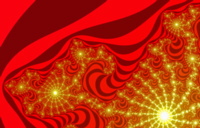
The Mandelbrot Set is probably the most famous fractal in the world. It is named after Benoit Mandelbrot, the mathematician who pioneered the modern study of fractals. Images like these are everywhere now, but they still look nice....
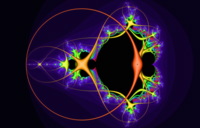
Orbit traps are objects that are placed into the mathematical environment of a fractal. Because of the way fractals are calculated, the image is copied over and over, with changes in its size and shape.
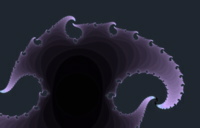
Julia Sets and Self-Squared Dragons are related to the Mandelbrot Set. They tend to be more symmetrical and less complex than the Mandelbrot Set, but that doesn't mean they're any less beautiful...
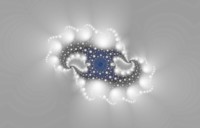
Orbit traps can be used with renderings of Julia and Dragon Sets as well, with somewhat different results than one gets with the Mandelbrot Set. Sometimes the original orbit trap object is not even clearly recognizable!
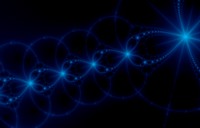
These sets are more distant relations of the types of sets shown above. They are derived from the use of iterative root finding methods such as Newton's Method, applied to all of the points on the complex plane for a given polynomial.
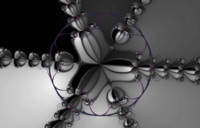
The same orbit trap technique is also applicable to the attraction basin fractals, with still different results. The huge variety of attraction basin fractals is apparent here too.
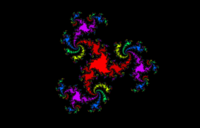
These are among my favorite images, because I have been yearning to make images like them for more than a decade. I first saw this type of image in Benoit Mandelbrot's definitive work The Fractal Geometry of Nature (Plate C5).
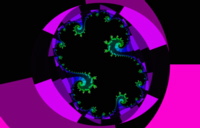
These images are based upon the equations used in earlier categories, but a special trick called "Binary Decomposition" is applied to them. At their best, these images sometimes remind me of Piet Mondrian or Frank Stella!
Finally, a fun thing I've been playing with is running images generated by Fracture through Aquatint, an image-processing application by Stick Software. I'll leave you with an example; this is an unretouched final image from Aquatint.
